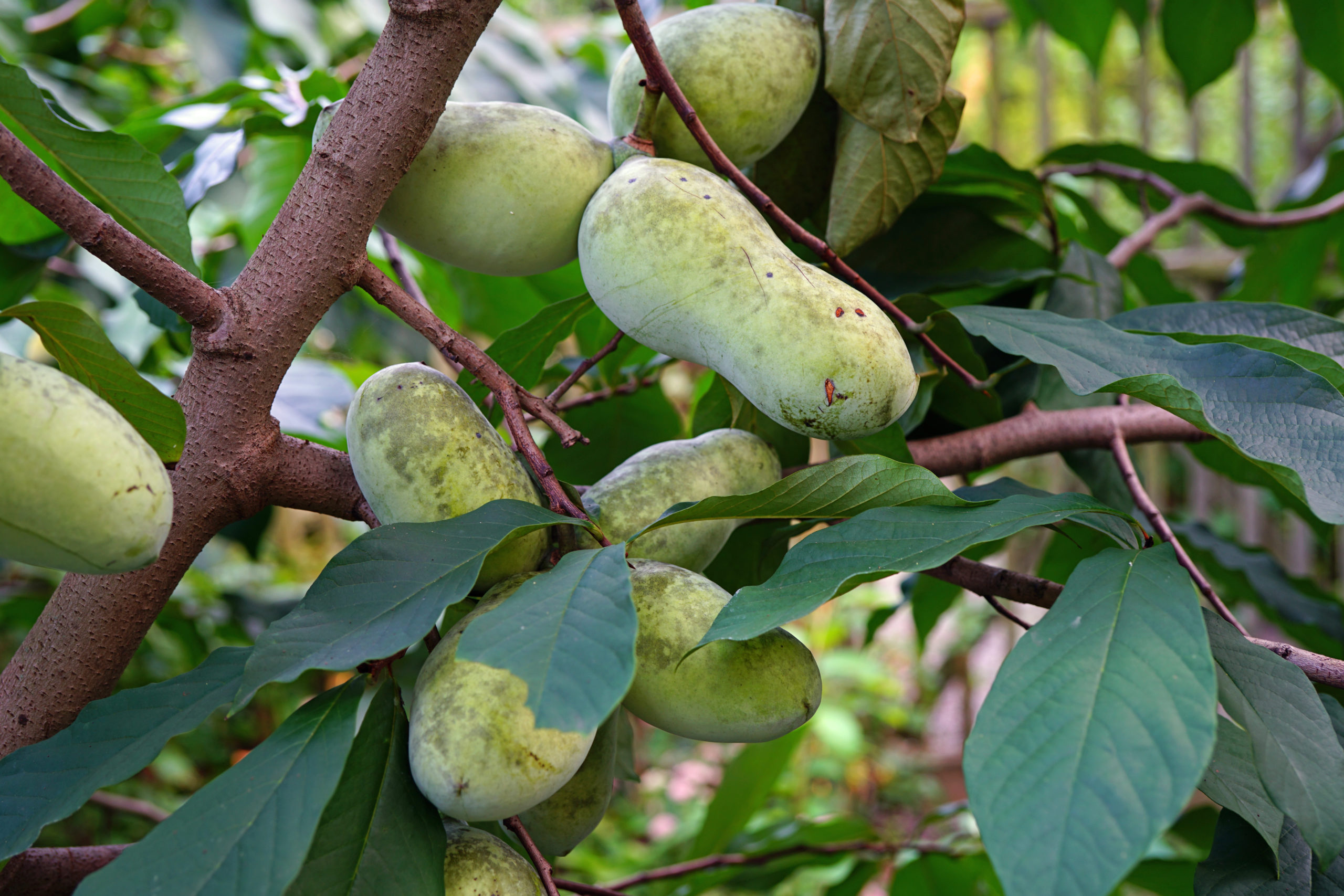Paw Paw
Asimina triloba
$36.95
12 in stock
Spring Shipping Season
All orders placed will be shipped during our Spring shipping season. All trees will be shipped bare root and dormant.
Spring Season shipping schedule:
Plant Zones 9-8: Late January-February
Plant Zones 8-7: February-March
Plant Zones 6-5: April–earlyMay
For more information see the Ordering & Shipping section below.
The Paw Paw is the largest edible fruit native to the United States. The unique fruit grows three to six inches long pods containing a yellow, custard-like flesh which tastes of rich banana, mango, and citrus flavors. The tree is a relatively small understory tree that enjoys partial shade, and can grow from the Panhandle to the Great Lakes. This fruit has been a treat for early explorers and todays hikers alike. It should be noted that the fruit can upset the stomach of some individuals. The fruit is enjoyed by many small mammals, including fox and squirrels. The large flowers make Paw Paw and excellent attractor of pollinators.
Interesting in regards to food plotting, the Paw Paw and its leaves are widely avoided by whitetail deer, even for browse. There is an important use for this. Anyone who has planted a food plot knows how difficult it is to protect young trees or fruit from being decimated by whitetail. Caging can be difficult or time consuming. The Paw Paw is an excellent choice to attract pollinators or other wildlife that will not be eaten or browsed on by deer. Coupled with the extensive range, the Paw Paw is a prime addition to any food plot.
| Height | 30' - 40' |
| Spread | 35' - 40' |
| Tree Form | Modified Leader |
| USDA Zone | 5A - 9 |
| Blooms | Spring |
| Drops Fruit or Nuts | August - October |
| Soil | Moist, fertile soil, slightly acidic. Soil must be well-drained. |
| Soil pH | 5.5 - 7.0 |
| Light requirements | Shade-tolerant understory tree |
| Spacing | 30 - 40' |
| Pruning | Annual pruning stimulates new growth and fruiting. |
| Fertilization | Do not fertilize at planting. Once the trees are established, fertilize in early spring (Mar-April) as growth begins. Do not fertilize in the fall, which could promote late season tender growth that can be damaged by early frosts. |
| Watering | Newly planted trees should be watered regularly. This is the most critical step in the establishment of your new trees. Please see the Watering section under "How to plant and grow" in our Learning Center. |
| Pollination | Need more than one tree |
At Chestnut Hill Outdoors, we’ve been shipping mail order trees for over 30 years. We’re experts at delivering healthy trees to your doorstep. All of our trees are container grown in root-enhancing pots, ensuring healthy root systems and much better success upon planting.
In Spring we ship bare-root, dormant trees. All plants are dipped in a root gel before shipping and wrapped in plastic to retain moisture.
Spring: All trees are shipped bare-root.
Fall: All trees are shipped in containers.
Size shipped: 8 – 24 inches
For more information, visit our Ordering & Shipping Page.



